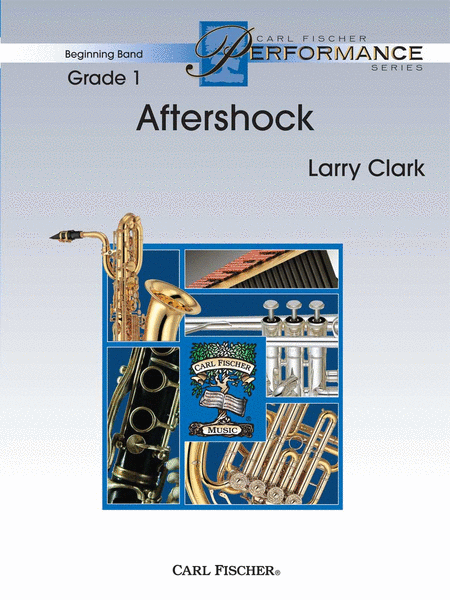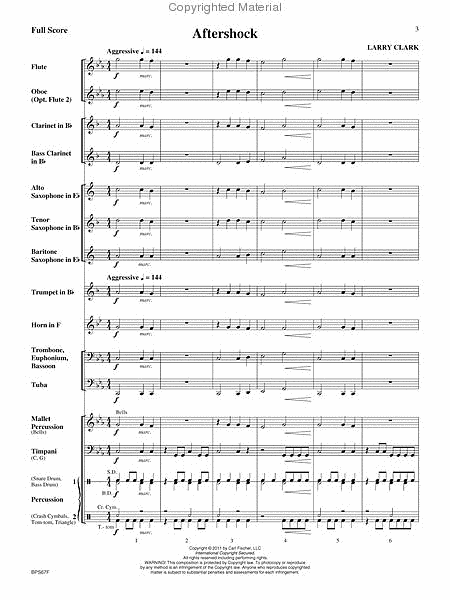Aftershock
-
Ships in 1 to 2 weeks
Details
Description
SKU: CF.BPS67
Composed by Larry Clark. Collate - FS SWS - spine: 3/8" or .375". Beginning Performance Series. Set of Score and Parts. With Standard notation. 8+2+8+2+5+2+2+8+3+6+2+1+3+1+2+3+16 pages. Duration 2 minutes, 31 seconds. Carl Fischer Music #BPS67. Published by Carl Fischer Music (CF.BPS67).ISBN 9780825884498. UPC: 798408084493. 9x12 inches. Key: Eb major.
Bands that had the great experience of playing Larry Clark’s popular Shockwave can now move on to part two: Aftershock. While a bit more difficult than its predecessor, Aftershock maintains the bold, exciting, and aggressive qualities that made Shockwave such a sparkler.
I wrote a piece a few years ago called Shockwave that was a huge success for beginning string groups. It used limited notes and ranges and only required quarter notes as the most difficult rhythm. Well, I thought it was time to write a follow-up piece and logically called it Aftershock. It contains some of the same types of compositional techniques as Shockwave, but I wanted the piece to be a little bit more difficult adding to the reason for the title Aftershock. So, out of those thoughts, this piece was created. The most difficult rhythm is two repeated eighth notes within the measure. It does at one point in the melody flip around and there are four eighths in a row on beat 4 and beat 1 of the next measure, but all of these occurrences happen on the same pitch. This should not be very difficult for the young string players to do.The piece begins with a bold and aggressive fanfare type of theme with lots of dramatic pauses. This material is used later in the piece as part of the coda as well. The main theme follows this fanfare material using the eighth-note figures described above. The theme has some dissonances placed on the quarters to create tension. A more legato, but derivative “bridge” theme is presented and then a return of the main theme, followed by some development and interplay between sections of the orchestra. The coda then returns to the fanfare opening and the piece is then completed with a short quote from the main theme to punctuate the ending.As with all of my pieces for young students, the tempo marking is only a guide and should be adjusted to your pedagogical needs.It has been my pleasure to have the opportunity to write this piece. I hope you and your students enjoy it and find it useful for your program.


 Share
Share